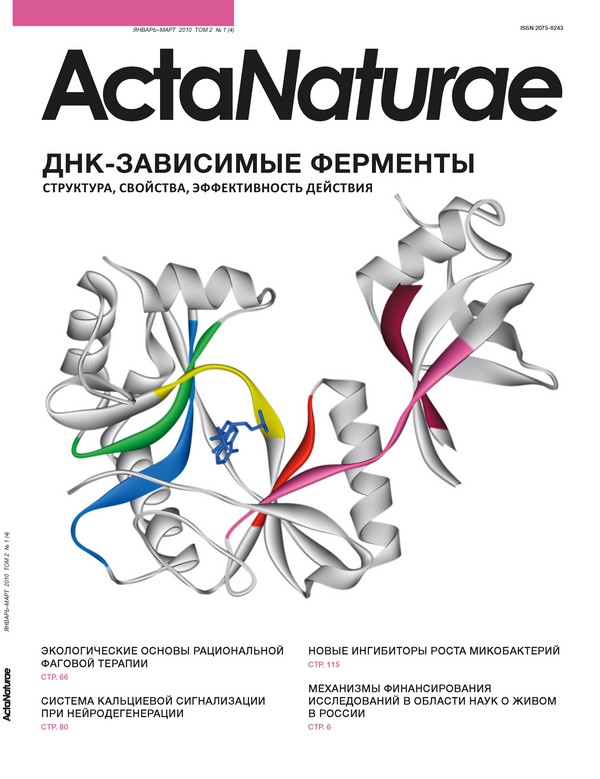New 5-Modified Pyrimidine Nucleoside Inhibitors of Mycobacterial Growth
- Authors: Alexandrova LA1, Shmalenyuk ER1, Kochetkov SN1, Erokhin VV2, Smirnova TG2, Andreevskaia SN2, Chernousova LN2
-
Affiliations:
- Engelhardt Institute of Molecular Biology, Russian Academy of Sciences
- Central Tuberculosis Research Institute, Russian Academy of Medical Sciences
- Issue: Vol 2, No 1 (2010)
- Pages: 108-110
- Section: Articles
- URL: https://actanaturae.ru/2075-8251/article/view/10780
- DOI: https://doi.org/10.32607/20758251-2010-2-1-108-110
- ID: 10780
Cite item
Abstract
Full Text
New 5-Modified Pyrimidine Nucleoside Inhibitors of Mycobacterial GrowthAbout the authors
L A Alexandrova
Engelhardt Institute of Molecular Biology, Russian Academy of Sciences
Email: ala200407@mail.ru
ul. Vavilova 32, Moscow, 119991, Russia
E R Shmalenyuk
Engelhardt Institute of Molecular Biology, Russian Academy of Sciencesul. Vavilova 32, Moscow, 119991, Russia
S N Kochetkov
Engelhardt Institute of Molecular Biology, Russian Academy of Sciencesul. Vavilova 32, Moscow, 119991, Russia
V V Erokhin
Central Tuberculosis Research Institute, Russian Academy of Medical SciencesYauzskaya alley 2, Moscow, 107564, Russia
T G Smirnova
Central Tuberculosis Research Institute, Russian Academy of Medical SciencesYauzskaya alley 2, Moscow, 107564, Russia
S N Andreevskaia
Central Tuberculosis Research Institute, Russian Academy of Medical SciencesYauzskaya alley 2, Moscow, 107564, Russia
L N Chernousova
Central Tuberculosis Research Institute, Russian Academy of Medical SciencesYauzskaya alley 2, Moscow, 107564, Russia
References
- Word Health Org., http://www/who/int/mediacentre/fastsheets/fs104/en/.2005
- Banerjee R., Schecter G.F., Flood J., Porco T.C. // Expert Rev Anti Infect Ther. 2008. V. 6. P. 713-724.
- Bucher H.C., Griffith L.E., Guyatt G.H., et al // AIDS 1999, V. 13. P. 501-507.
- Daley C.L., Small P.M., Schecter G.F., et al // N. Engl. J. Med. 1992. V. 326. P. 231-235.
- Ginsberg A.M., Spigelman M. // Nat Med. 2007. V. 13. P. 290-294.
- Tsuyuguchi I. // Tuberculosis (Edinb). 2001. V. 81. P. 221-227.
- Tuberculosis in Russia. “Prima” Moscow, 2009
- De Clercq E. // Adv Virus Res. 2009. V. 73. P. 1-53.
- Van Calenbergh S. // Verh K Acad Geneeskd Belg. 2006. V. 68. P. 223-248.
- Gupte A., Boshoff H.I., Wilson D.J., et al // J. Med. Chem. 2008, V. 51, P. 7495-7507
- Rai D., Johar M., Manning T., et al // J. Med. Chem. 2005, V. 48, P. 7012-7017.
- Rai D., Johar M., Srivastav N.C., et al // J. Med. Chem. 2007, V. 50, P. 4766-4774
- Johar M., Manning T., Tse C., et al // J. Med. Chem. 2007, V. 50, H. 3696-3705.
- Srivastav N.C., Manning T., Kunimoto D.Y., Kumar R. // Bioorganic & Medical Chemistry, 2007, V. 15, P. 2045-2053
- Alexandrova L.A., Skoblov A.Yu., Jasko M.V., Victorova L.S., Krayevsky A.A. // Nucl. Acids Res., 1998, V. 26, P. 778-786.
- Dyatkina N.B., von Janta-Lipinski M., Minasyan Sh.H., et al // Bioorg. Khim., 1987. V. 13. P. 1366-1374.
- Andreevskaia S.N., Chernousova L.N., Smirnova T.G., Larionova E.E., Kuz’min A.V. // Probl Tuberk Bolezn Legk. 2006;(12): 43-48.
Supplementary files







